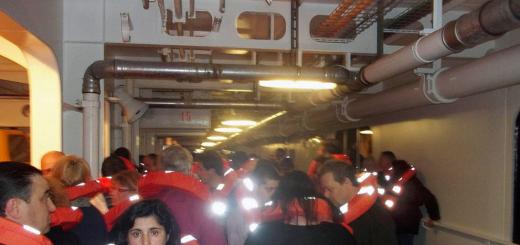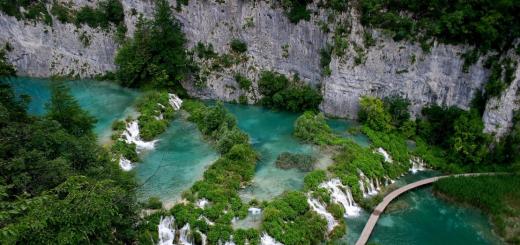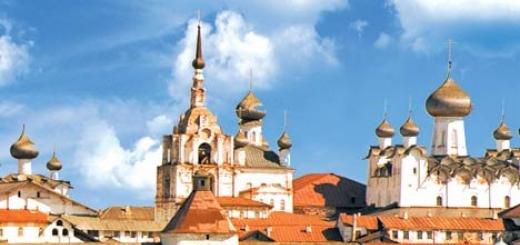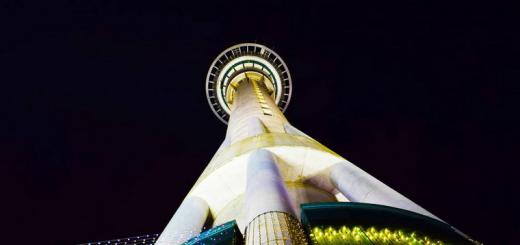Awarded (posthumously) the Order of the Red Banner.
Today, October 15, marks 48 years since the death of 19-year-old flight attendant Nadezhda Kurchenko, who at the cost of her own life tried to prevent the seizure of the Soviet passenger aircraft terrorists.
In modern Russia, the name of Nadezhda Kurchenko is practically forgotten. Probably, official propaganda is trying to make modern girls try to imitate not pure, bright people who are able to give their lives without hesitation, doing their duty, but girls from TV shows and "glossy magazines".
Born on December 29, 1950 in the village of Novo-Poltava, Klyuchevsky district Altai Territory... She graduated from a boarding school in the village of Ponino, Glazovsky district of the Ukrainian Autonomous Soviet Socialist Republic. Since December 1968 she worked as a flight attendant of the Sukhumi air squadron. She died on October 15, 1970, trying to prevent the hijacking of an AN-24 plane flying Batumi-Sukhumi-Krasnodar, captured by terrorists by the father and son Brazinskas (45 and 13 years old). At an altitude of 800 meters, two passengers - father and son Brazinskasa called a flight attendant and handed a note to the pilots demanding to change the route and fly to Turkey. The girl rushed into the cockpit and shouted: "Attack!" The criminals rushed after her, opening fire. "No one to get up!" Shouted the youngest of the hijackers. "Otherwise, we'll blow up the plane!"

Shooting continued in the cockpit. Commander Georgy Chakhrakia was hit in the spine by one of the bullets: Navigator Valery Fadeev was shot in the lung, and flight mechanic Hovhannes Babayan was wounded in the chest. Co-pilot Suliko Shavidze was the luckiest one - the bullet got stuck in a steel pipe in the back of his seat. Behind the pilots stood Brazinskas senior and, shaking a grenade, shouted: "Keep the seashore to the left. Heading south. Do not enter the clouds!"
The pilot tried to deceive the terrorists and land the An-24 at the military airfield in Kobuleti. The pilots still managed to turn on the SOS signal, but it was too close to the Turkish border. But the hijacker once again warned that he would blow up the car (later it turned out that Brazinskas was bluffing, since the grenade was a training grenade). Soon the captured aircraft crossed the Soviet-Turkish border, and after another half an hour found itself over the airfield in Trabzon. The plane made a circle over runway and fired green rockets, asking to be released for an emergency landing. Immediately after landing, the hijackers surrendered to the Turkish authorities. Representatives of the Turkish and American special services left for the place. Passengers and crew members were asked to stay in Turkey, but no one agreed to this. The next day, on a specially sent plane, all the people and the body of the deceased girl were taken to the USSR. A little later, the Turks also returned the hijacked An-24. After a major overhaul, board N46256 with a photograph of Nadya Kurchenko in the cabin flew in Uzbekistan for a long time.
According to the recollections of friends and colleagues, Nadya was a pure and bright person, she had a wedding scheduled in three months. This drama then shook the whole country. The Soviet Union was shocked - this was the first time such a crime had happened. The name of Hope spread all over the world in one day. And for many years it became a symbol of Komsomol heroism. This was the first such case in the USSR, there were no instructions on this matter, and a 19-year-old Soviet girl acted as her heart and conscience told her.
Suliko Shavidze, Valery Fadeev and flight engineer Hovhannes Babayan recovered and then were able to fly, having worked until retirement. Commander Chahrakia was confined to a wheelchair for two years, underwent several surgeries on the spine, could no longer fly, and remained a disabled person of the second group.
Nadezhda Kurchenko was buried in the center of Sukhumi. After 20 years, her grave was transferred to the city cemetery in the city of Glazov. In the village of Ponino, where she studied, a monument was erected to her. The name of Nadezhda Kurchenko was given to one of the peaks of the Gissar ridge, a tanker of the Russian fleet and a minor planet in the constellation Capricorn.
Pranas Brazinskas was born in 1924 in the Trakai region of Lithuania. In 1949, according to the biography written by Brazinskaos, the leader of one of the "forest brothers" detachments killed the chairman of the council with a shot through the window and mortally wounded P. Brazinskas' father who happened to be nearby. With the help of local authorities, P. Brazinskas bought a house in Vievis and in 1952 became the head of the warehouse of household goods of the Vevis cooperative. In 1955 P. Brazinskas was sentenced to 1 year of correctional labor for theft and speculation in building materials. In January 1965, by decision of the Supreme Court, he was again sentenced to 5 years, but in June he was released early. After divorcing his first wife, he left for Central Asia.
Being engaged in speculation (in Lithuania he bought car parts, carpets, silk and linen fabrics and sold in Central Asia, having a profit of 400-500 rubles for each parcel), he quickly saved up money. In 1968 he brought his thirteen-year-old son Algirdas to Kokand, and two years later he left his second wife.
On October 7-13, 1970, having visited Vilnius for the last time, P. Brazinskas and his son took their luggage - it is not known where the acquired weapons, accumulated dollars (according to the KGB, more than 6,000 dollars) and flew to the Transcaucasia.
The USSR demanded that Turkey immediately extradite the criminals, but this requirement was not met. The Brazinskas asked for political asylum. The Turks refused to hand over the terrorists, they were given ridiculous terms, and three years later they were amnestied. After living for several years in a luxurious villa "under house arrest", they went to the United States, where they dreamed of getting.
The farce with the "flight" of criminals to America was framed as follows: in 1976, father and son allegedly escaped from house arrest and on June 23 turned to the American Embassy in Turkey with a request to grant them political asylum in the United States. Having received a refusal, the Brazinskas again "surrendered" into the hands of the Turkish police, they were kept under guard for a couple of weeks in a hospital in Istanbul and ... finally released. On July 11, they received a Venezuelan visa. Then, via Italy and Venezuela, they flew to Canada without any problems. On August 24, during a stopover in New York, the Brazinskas got off the plane and were "detained" by the US Migration and Naturalization Service.
The Brazinskas were given American passports with new names. Algirdas officially became Albert Victor White, and Pranas became Frank White. Real life in the US was very different from what they expected. They settled in the town of Santa Monica in California, where they worked as ordinary painters, lived together in a one-room apartment, their personal lives did not work out. In the United States, the Brazinskas wrote a book about their "exploits", in which they tried to justify the hijacking and hijacking of the plane as "the struggle for the liberation of Lithuania from Soviet occupation." To whitewash himself, P. Brazinskas stated that he had hit the flight attendant by accident, in a "shootout with the crew." Even later, A. Brazinskas claimed that the flight attendant had died during a "shootout with KGB agents" ... However, the Lithuanian TV channel LNK, shortly before his death, interviewed Pranas Brazinskas, who bluntly stated that "he killed this bitch because she stood with him. on a way".
In the Lithuanian community of America, the attitude towards the Brazinskas was wary, they were openly afraid of them. An attempt to organize a fundraising for the fund of their own help failed. After Lithuania gained independence, the “patriots” did not make any attempts to return to their homeland. However, the support of the Brazinskas by Lithuanian organizations gradually faded away, everyone forgot about them. The criminals lived miserably, under old age Brazinskas Sr. became irritable and unbearable. During one of these quarrels, 45-year-old "Lithuanian patriot" Albert Victor White beat his 77-year-old dad with dumbbells with a blow to death, was convicted of the murder of his father Frank.
In the Soviet Union, the status of a flight attendant was only slightly lower than that of a film actress or pop singer. Young and pretty girls in an elegant uniform with friendly smiles, they looked like real celestials. Plays were written about them, films were shot, songs were dedicated to them. One of these songs - "My clear star" - was a real hit at the dance parties of the seventies. However, not all of the dancers knew that the piercingly sad words and melody of this song were dedicated to the tragic death of the flight attendant, or, in official language, the flight attendant Nadezhda Vladimirovna Kurchenko.
Komsomol member, sportswoman and beauty
Nadya Kurchenko was born on December 29, 1950 in the Altai Territory. Her childhood is dense forests near her native village of Novo-Poltava (Klyuchevsky district), excellent grades at school, a large and friendly company of peers. Later, Nadia's family moved to the homeland of her mother, Henrietta Semyonovna, to the village of Ponino, Glazovsky District (Udmurtia). It was not easy to establish life in a new place - the alcoholism of the father, two younger sisters and a brother. Nadya had to study at the Glazov boarding school. However, she became one of the best students in the school, loved poetry very much and recited them beautifully. The beautiful blue-eyed Nadya was a permanent Snow Maiden at New Year's parties, and when she entered the Komsomol, she became a pioneer leader in the lower grades, organized campaigns, and published a wall newspaper. For Nadezhda, the Komsomol ticket was not an empty formality, and the concepts of "conscience" and "duty" were not just words.
It is difficult to say why a girl from an Udmurt village decided to link her fate with aviation. However, after graduating from school, Nadya left for a distant Southern City Sukhumi, where she first started working in the accounting department of the airport, and when she turned 18, she went to work as a flight attendant. The girl quickly mastered the technical subtleties of her profession and knew how to get along with the most restless passengers. Her school hobby for tourism continued in a new place - she became responsible for sports work in the squadron, organized exciting trips around the outskirts of Sukhumi and even passed the standards for the USSR Tourist badge. In the very first year of operation, the first serious test came - a fire on board the aircraft and the need for it to land with one engine. For the impeccable performance of their duties in emergency Nadezhda Kurchenko was awarded a personalized watch.
Nadezhda had many plans - entering a law school, marrying a school friend Vladimir Borisenko. In May 1970, Nadezhda came on vacation to her relatives. We agreed that the wedding will be played on November or new year holidays... And on October 15, the girl went on her last flight.
Close yourself
Flight 244 from Batumi to Krasnodar with a landing in Sukhumi was considered short and uncomplicated, from Batumi to Sukhumi only half an hour of summer. 46 people boarded the AN-24. Among them were a middle-aged man with a fifteen-year-old son, Pranas and Algirdas Brazinskas. Ten minutes after takeoff, Brazinskas Sr., sitting next to the service compartment, called Nadezhda Kurchenko and ordered her to take an envelope with a note to the cockpit. The typewritten text contained a demand for re-routing and a threat of death in case of disobedience. Seeing the reaction of the flight attendant, the man jumped out of his chair and rushed to the cockpit. "You can't come here, come back!" - Nadezhda shouted, blocking his path. She managed to shout "Attack" and fell - the bandits started shooting. The injured pilots had to head towards Trabzon airport under the threat of the plane explosion. The Turkish authorities were condescending to the hijackers - after serving a short term and being released under an amnesty, they moved to the United States, but this is a completely different story.
Nadezhda Kurchenko was buried in Sukhumi - in the uniform of a flight attendant and with a Komsomol badge; 20 years later, at the request of her mother, the ashes were reburied in Glazov. The tanker, the peak of the Gissar ridge and the planet in the constellation Capricorn were named after Hope. In addition, after the death of the flight attendant Kurchenko, the rules for the safety of passengers during air travel were radically changed and the norms of international laws against air terrorism were tightened.
Exactly 45 years ago, our compatriot, flight attendant Nadezhda Kurchenko, set off on her last flight. In a fight with terrorists, she died, protecting the crew and passengers of the plane.
Forty-five years ago, on October 15, 1970, terrorists hijacked a passenger plane for the first time in the world. It happened in the Soviet Union in the sky above Black Sea coast The Caucasus. A fragile young flight attendant, a native of the Altai Territory, Nadezhda Kurchenko, tried to protect the pilots from an angry armed bandit. IA "Amitel" suggests recalling the chronicle of these tragic events.
View from the ground
An-24 took to the skies from the Batumi airfield on October 15, 1970 at 12:30. The course is for Sukhumi. There were 46 passengers and five crew members on board. The scheduled flight time is 25-30 minutes. But life broke both the schedule and the schedule.
In the ninth minute of the flight, the plane deviated sharply from the course. Radio operators asked for the board - there was no response. Communication with the control tower was interrupted. The plane was leaving in the direction of close Turkey. Military and rescue boats went out to sea. Their captains received an order: to follow at full speed to the place of a possible disaster.
The board did not respond to any of the requests. A few more minutes - and the An-24 left the airspace of the USSR. And in the sky over the Turkish coastal airfield Trabzon, two missiles flashed - red, then green. It was the emergency landing signal. The plane touched the concrete pier of a foreign air harbor. Telegraph agencies all over the world immediately reported: a Soviet passenger plane had been hijacked. The flight attendant was killed, there are wounded. Everything.
Childhood view
In the Soviet Union, the status of a flight attendant was only slightly lower than that of a film actress or pop singer. Plays were written about them, films were shot, songs were dedicated to them. Nadya Kurchenko was born on December 29, 1950 in the Altai Territory.
Her childhood is dense forests near her native village of Novo-Poltava (Klyuchevsky district), excellent grades at school, a large and friendly company of peers. Later, Nadia's family moved to the homeland of her mother, Henrietta Semyonovna, to the village of Ponino, Glazovsky District (Udmurtia).

After graduating from school, Nadya left for the distant southern city of Sukhumi, where she first started working in the accounting department of the airport, and when she turned 18, she went to work as a flight attendant.
In the very first year of operation, the first serious test came - a fire on board the aircraft and the need for it to land with one engine. For the impeccable performance of her duties in an emergency, Nadezhda Kurchenko was awarded a personal watch.
Nadezhda had many plans: entering a law school, marrying a school friend Vladimir Borisenko. In May 1970, Nadezhda came on vacation to her relatives. We agreed that the wedding will be played on November or New Year's holidays. And on October 15, the girl went on her last flight.
View from the plane
Flight 244 from Batumi to Krasnodar with a landing in Sukhumi was considered short and uncomplicated, from Batumi to Sukhumi only half an hour of summer. 46 people boarded the AN-24. Among them was a middle-aged man with a fifteen-year-old son, Pranas and Algirdas Brazinskas.
Ten minutes after takeoff, Brazinskas Sr., sitting next to the service compartment, called Nadezhda Kurchenko and ordered her to take an envelope with a note to the cockpit. The typewritten text contained a demand for re-routing and a threat of death in case of disobedience. The geek with a weapon went to the cockpit, but a fragile flight attendant stood in his way.
Further on in the plane, a massacre began. The first bullet hit Nadia in the thigh. She pressed even more tightly against the pilot's door. The terrorist tried to squeeze her throat. Nadia - knock the weapon out of his right hand. A stray bullet went into the ceiling.

Nadya fought back with her feet, hands, even her head. Struck by the incredible resistance of Nadia, enraged by his own powerlessness to cope with the wounded, bloody fragile girl, without aiming, without thinking for a second, he fired point-blank and, throwing the desperate defender of the crew and passengers into the corner of the narrow passage, burst into the cockpit.
The carnage continued with the pilots. Navigator Valery Fadeev, flight mechanic Hovhannes Babayan were wounded, pilot Georgy Chakhrakiya was crushed by a bullet in his spine. The wounded pilots landed the liner in the nearest Turkish Trabzon. Later, investigators counted 42 bullets fired.
The Turkish authorities were condescending to the hijackers - after serving a short term and being released under an amnesty, they moved to the United States, but this is a completely different story.
Afterword
Nadezhda Kurchenko was buried in Sukhumi in the uniform of a flight attendant and with a Komsomol badge; 20 years later, at the request of her mother, the ashes were reburied in Glazov. The tanker, the peak of the Gissar ridge and the planet in the constellation Capricorn were named after Hope. In addition, after the death of the flight attendant Kurchenko, the rules for the safety of passengers during air travel were radically changed and the norms of international laws against air terrorism were tightened.
It seems that the sky itself decided to put an end to the heavenly tragedy. In early 2002, news agencies reported that 46-year-old Albert Victor White had killed his father with a baseball bat in Santa Monica, California. Albert turned out to be the former Algirdas, killed - ex-Pranas. Now Brazinskas the elder is in the grave, the younger is in prison.
Forty-nine years ago, an airplane hijacking took place for the first time in the Soviet Union. An-24 flying from Batumi to Sukhum was captured by Lithuanian terrorists.
Sputnik, Astanda Ardzinba.
Capture
On October 15, 1970, a Soviet civilian aircraft An-24 took off from Batumi to Sukhum. The travel time would have taken 30-35 minutes, but five minutes after take-off, at 12:40 local time, two passengers in the first row called the flight attendant and demanded that the envelope be handed over to the pilots. It was "Order No. 9" printed back in Vilnius, in which the terrorists demanded to fly to Turkey and stop radio communication, for failure to comply with the order - death. At the same time, one of the terrorists announced to the passengers that the Soviet regime was no longer on their plane.
Thus began the first hijacking of a passenger plane in the history of the USSR. Onboard there were 46 passengers and five crew members.
The terrorists were the Lithuanians, the father and son of Brazinskas. Later, the competent authorities will thoroughly study all stages of their life. It turns out that the elder Brazinskas, 45-year-old Pranas, an anti-communist, served in the auxiliary troops of the German division in 1944, where he assembled pontoon bridges. Later he supplied the Lithuanian members of the Resistance with weapons. In 1965, Pranas Brazinskas, working as the head of a household goods warehouse, received five years in a general regime colony for stealing socialist property, but he was released on parole three years later, and in order not to tempt fate, he left with his son Algirdas to Uzbekistan.
But even there, Pranas became the organizer of the local black market, the son also participated in his father's scams. When the KGB became interested in the Brazinskas in 1970, they decided to flee the country, thinking of nothing better than hijacking a plane.
However, these curious details of the biography of the invaders were not yet known to either the passengers on board or the crew.
© Sputnik / Vladimir Akimov
Turboprop passenger aircraft "AN-24"
Nadezhda Kurchenko, a 19-year-old flight attendant of the Sukhum aviation detachment, rushed to the pilots shouting: "Attack!" - The terrorists rushed after her. "No one to get up! - shouted Algirdas. - Otherwise we will blow up the plane!" - Kurchenko tried to block their way into the cockpit, and then Pranas point-blank shot her from the sawn-off shotgun.
The terrorists broke into the cockpit and began to shoot at the crew, wounding the commander, flight mechanic and navigator, only the co-pilot was not injured. Later they will explain that they deliberately decided to injure three crew members, but not kill, but leave one unharmed so that he could fly the plane.
Standing behind the pilots, Pranas Brazinskas shook a grenade and ordered to head south, to Trabzon.
About an hour and a half after being hijacked, the aircraft landed in this Turkish city... Local special forces, who had been alerted to the incident, cordoned off the plane. Coming out of the plane, Brazinskas Sr. said: "Here it is, freedom!" - Both terrorists voluntarily laid down their arms and surrendered to the police.
All crew members were provided medical assistance... Passengers and pilots were offered to stay in Turkey, but none of them accepted this offer. A day later, a Soviet military plane took them all back to the USSR, and the body of the deceased flight attendant Nadezhda Kurchenko was delivered to Sukhum on a special flight.
In memory of Nadya
The feat of nineteen-year-old Nadezhda Kurchenko, a graduate of the Poninsky boarding school of the Glazovsky district in Udmurtia, a flight attendant of the Sukhum aviation detachment, did not go unnoticed. Songs were written in honor of Nadia, parks and streets of Soviet cities were named, a small planet No. 2349 discovered by scientists from the Crimean Observatory was named after her, the film "Applicant" was made about her. By the decree of the Presidium of the Supreme Soviet of the USSR, Nadezhda Kurchenko was posthumously awarded the Order of the Red Banner for courage and bravery.

© Sputnik / Lev Polikashin
Opening of the monument to the flight attendant Nadezhda Kurchenko, who died at the hands of the father and son of the Brazinskas, who hijacked the An-24 passenger plane, which was performing regular flight No. 244 from Batumi to Sukhum.
Nadezhda Kurchenko was born on December 29, 1950 in the village of Novopoltava, Klyuchevsky District, Altai Territory. She graduated from a boarding school in the village of Ponino, Glazovsky District, Udmurt Autonomous Soviet Socialist Republic. In December 1968, Nadya moved to Sukhum, where she began to work as a flight attendant for a local airline. Young Nadezhda Kurchenko did not live two and a half months before her twenties and three months before her wedding.
The body of the flight attendant killed by the terrorists was brought by a special flight from Trabzon to Sukhum, where her mother had already flown from Udmurtia. They decided to bury Nadya Kurchenko in Sukhum, in one of the central parks, which to this day bears her name.
On the day of her funeral, thousands of people followed the coffin through the city streets and brought her flowers. And the planes leaving for the flight wiggled their wings as a sign of respect to their young colleague.
Twenty years after the tragic death in 1990, the ashes of Nadya Kurchenko, at the insistence of her mother, were transported to Udmurtia, the remains of the heroine are now buried in her cemetery hometown Glazov. The school of young pilots in the capital of the republic of Izhevsk opened a museum named after her, which was awarded the title of "national".
Life "under the supervision of the KGB"
The Turkish authorities, largely due to the influence of the United States, did not extradite the terrorists to the Soviet Union. They were sentenced: the father to eight years in prison, the son to two. But less than two years later, both bandits were free and managed to move to the United States, where the Lithuanian diaspora procured citizenship for them. In the West, it was believed that the Brazinskas could not be put on a par with other terrorists, as if they were fighting against the Soviet regime.
In America, they changed their first and last names to Frank and Albert White and settled in the town of Santa Monica in California. Life has improved for both. Brazinskas Sr. first worked as a painter, and then became a co-owner of an arms store. His son graduated from accounting courses, got a job at an insurance company and married an American woman.
However, until the end of his life, Brazinskas Sr. was haunted by the communists. It seemed to him that the house was being watched by KGB agents who wanted to steal it back to the USSR. In the 1980s, he was chronicled several times when, with a pistol in his hand, he brought "KGB agents" to the police station - some of the first people they met from the street.
In America, Algirdas wrote a book of memoirs about his "exploits" with his father, in which he tried to justify the hijacking and hijacking of an aircraft "by the struggle for the liberation of Lithuania from Soviet occupation," and also talked about the horrors of life in the Soviet Union. But even after the collapse of the Soviet Union and Lithuania's independence, the Brazinskas did not return to their homeland, still fearing disguised KGB agents.
In his old age, Brazinskas Sr. became irritable, he and his son often had quarrels. During one of these, 45-year-old Algirdas beat his 77-year-old father to death with sports dumbbells. The court found him guilty and sentenced him to 16 years in prison.
Monument to Nadezhda in Sukhum
In Sukhum, a city park was named in honor of Nadezhda Kurchenko, where a monument to a brave flight attendant was erected.
During Patriotic War the people of Abkhazia, the monument was significantly damaged, as it was subjected to constant shelling.
In 2010, the city administration allocated funds, the holes were patched up on the monument, but the damage from heavy shelling affected when a tree fell on it in 2013 - the monument fell to pieces.
In 2017, that the monument will be restored and installed in its original place.











